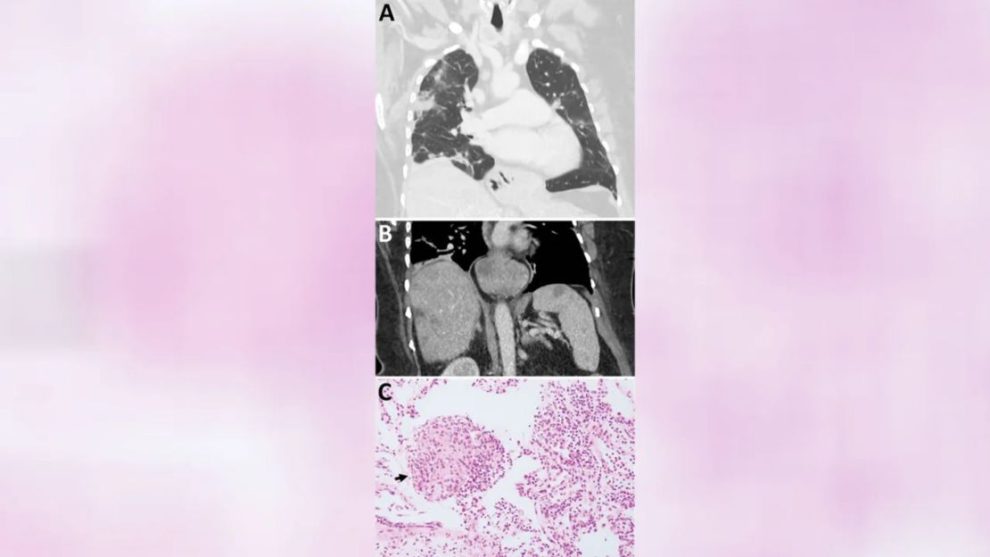() – When a 64-year-old Australian woman was admitted to hospital for brain surgery, neurosurgeon Dr Hari Priya Bandi did not expect to extract a live, three-inch-long parasitic worm wriggling in her forceps.
“I had only come across worms because of my not-so-great gardening skills… I find them terrifying and this is not something I deal with at all,” Bandi told of the world’s first discovery of a living worm inside a human brain.
Canberra Hospital infectious disease expert Sanjaya Senanayake told the discovery sparked a frenzy to find out exactly what the parasite was.
A colleague at the hospital lab was able to contact an animal parasitology expert at a government scientific research agency just 20 minutes away, and found his unexpected answer.
“We were able to send him the live worm, he examined it and identified it immediately,” Senanayake explains.
Molecular testing confirmed it was Ophidascaris robertsi, a worm commonly found in pythons, according to a news release from the Australian National University and Canberra Hospital.
“To our knowledge, this is also the first case involving the brain of any mammalian species, human or otherwise,” said Senanayake, who is also a professor at the Australian National University.
According to researchers, the patient lived near a lake area inhabited by carpet pythons in south-east New South Wales. Although she had no direct contact with the reptiles, it is likely that she contracted the worm after foraging for New Zealand spinach, a native leafy vegetable, which she cooked and ate.
Doctors and scientists who treated her case theorized that a carpet python might have spread the parasite through its feces to vegetables, which the patient then touched and contaminated with food or other kitchen utensils.
The woman was initially admitted to a local hospital in late January 2021 after suffering three weeks of abdominal pain and diarrhea, followed by a constant dry cough, fever and night sweats.
Several months later, her symptoms developed into memory loss and depression, so she was sent to a hospital in the Australian capital, where an MRI revealed something unusual in the right frontal lobe of her brain.
What typically happens is that Australian carpet pythons carry Ophidascaris robertsi and shed the parasite’s eggs in their feces, spreading them through vegetation that small mammals and marsupials eat. At some point, the pythons also eat those same infected animals, and then the parasite lives inside the snake, completing the cycle.
In this case, the patient was likely an accidental host of the worm, Senanayake said. The parasite is highly invasive and its larvae, or juveniles, are suspected to have been present in other organs of the woman’s body, including the lungs and liver.
Senanayake said the case highlighted the growing danger of diseases and infections passing from animals to humans, especially as people move deeper into animals’ habitats.
“Humans, domestic animals and wild animals have more opportunities to interact with each other and with vegetation. So this is just another indicator that there will be more new infections in the future,” Senanayake said.
According to him, about 30 new infections have been discovered in the world in the last three decades. And of these emerging infections, about 75% were zoonotic, meaning that there has been transmission from the animal world to humans, including coronaviruses.
“This Ophidascaris infection is not transmitted between people, so it will not cause a pandemic like SARS, Covid-19 or Ebola. However, the snake and the parasite are found in other parts of the world, so it is likely that other cases will be recognised in other countries in the coming years,” Senanayake said.
“The other message from this case is about foraging. People who forage should wash their hands after touching foraged produce. Any foraged material used for salads or cooking should also be thoroughly washed.”
This case from Australia is completely different from recent reports of people who have developed severe headaches due to the presence of tapeworm larvae in the brain.
This condition is known as neurocysticercosiswhich can cause neurological symptoms when larval cysts develop in the brain.
According to the U.S. Centers for Disease Control and Prevention (CDC), people become infected with the parasite by ingesting eggs found in the feces of a person who has intestinal tapeworm. More than 1,000 cases are reported each year in the United States alone.
Last year, a study revealed that a 25-year-old Australian woman had tapeworm larvae in the brain after suffering a headache that lasted more than a week.
An MRI of her brain led doctors to believe that a tumor might be causing her pain, but after operating on her and removing the lesion, they discovered that it was actually a cyst filled with tapeworm larvae.














Add Comment